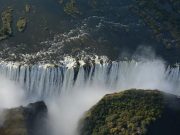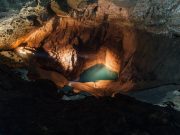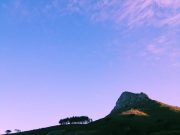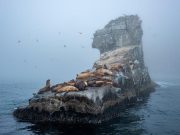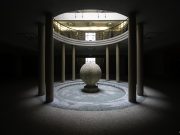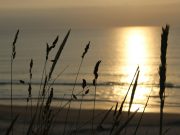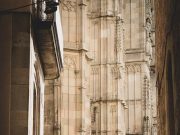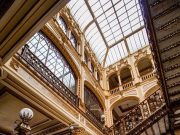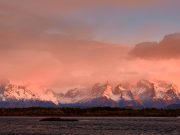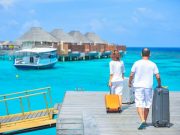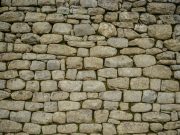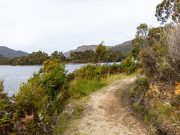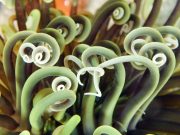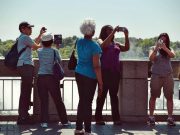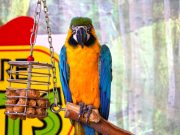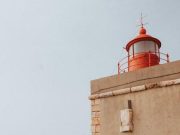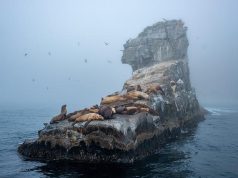When?somebody mentions Denmark, what comes to mind? Bacon? Borgen? Danish pastries? Or even endless discussions of what constitutes hygge? In 2016, Copenhagen noted 13,100 a lot more bikes than cars and trucks in the city middle, and this combined with the superb cafes to preference a pastry during, the world-class restaurants where you could nibble on a sm?rrebr?deb, makes it easy to really like Copenhagen. There?s absolutely nothing rotten with this state of Denmark, although i went to find out no matter if there?s much more to Copenhagen than the Tivoli, the limited Mermaid, and the Michelin-starred Noma. I examined the other side of the city on a weekend break for the Danish capital.
The Cisterns Art Gallery Versus Cisternerne
Lush, Baroque gardens surround your classy Renaissance Frederiksborg Structure, the Danish Versailles, where sun-drenched your lawn are dotted utilizing elegant statues. From one side of the store is a sprawling zoo and you can see straight into the spacious hippo enclosure. However, throughout the road from the Frederiksborg Structure is a much more exciting attraction, for art lovers and culture lions, in particular. The Cisterns is really an old, abandoned, below the ground water reservoir which is reconstructed to serve being a spacious and creepy exhibition space referred to as Cisternerne (The Cisterns). The Copenhagen Waterworks corporation began excavation for the Cisterns in 1856 and it was finalized three years later.

To obtain this spooky collection, cross over the busy primary road that goes by Frederiksborg Palace and look for some sort of glass pyramid increasing up out of the property of Sondermarken park. Guests then descend into the chilly subterranean space or room that once held up to 16 million litres of clean, drinking water. Lacking natural light, the spooky space is currently illuminated by a type of candlelit chandeliers still dripping wet with wax.

On my own visit, in The fall 2016, I saw a speech by Eva Koch allowed ?That Dream of Serenity? which has as its topic the idea of survival as well as the belief that despite the world?s terrorism, war in addition to destruction, there is always existence and growth. This exhibition is extremely environmental in the semi-darkness of the labyrinths; poppy blooms bloom red together with bright green leaves stand out against the dark-colored columns. White doves abruptly flutter up in the claustrophobic darkness. Koch trained as a sculptor and always brings the planet into her market. Aside from the art, this Cisterns are the only illustration of a dripstone ?cave? in Denmark. The dripstones are developed from rainwater leaking from the concrete threshold, which has dissolved this lime-rich minerals in the real and reacted utilizing carbon dioxide in the subway air to create natural-looking, really fragile stalactites and stalagmites.
The Spherical Tower / Rundt?rn
The Round Tower is a must-see in Copenhagen. The view from the the surface of the tower over the roofs of Copenhagen in a 360-degree panorama is amazing. Your notable feature of this relatively squat circle tower is the spiral ramp, which days round and round seven and a half occasions for 209m in a definitely not particularly steep pitch up to the top.

Legend claims that the king got the ramp made out of cobblestones so that your dog could ride his or her horse all the way approximately the top. It is indeed quicker to climb than lots of spiral staircases I’ve got struggled up in my personal quest to see the check out from the top of a church spire! The girl in the ticket business office told me, however, that it legend was not correct, and the reason for a shallow sloping stone incline was so that troopers could take up resources and ammunition. And in the tower, within the adjoining chamber is a library, where there are often exhibitions, concerts as well as the annual flea market throughout January.

Hans Christian Andersen invested many hours in this library. His first fairy tale The Tinderbox (1835) mentions 14 ?with eyes as big as a tower? plus scholars believe this particular refers to the Rundt?rn, that is originally built just as one observatory; literally an eye towards the sky. Another modest doorway leads from the ramp to the bell wind turbine tower, a preserved attic-like room in your home, which looks like an established from a creepy scary film as there is a new rocking chair during the far corner, lit up by a shaft of from a dusty windows.
The Round Tower seemed to be built in 1642 as part of the Trinitatis-complex, called after the Holy Trinity plus designed to accommodate three things: The observatory towards the top of the tower, a library on the floor throughout the Trinitatis Church and of course a church itself underneath it. The astronomer Alfredia Longomontanus suggested that which the spiral ramp has been constructed by Ruler Christian IV, that suffered from terrible gout and found it hard to be able to climb up steep techniques.
In October 1716, Russian Tsar Peter the Great (1672-1725) rode up and down a Round Tower?vertisements spiral ramp. It had been obviously a popular matter, as Peter the truly great was followed by his or her wife Tsarina Catherine II exactly who rode to the top in a guru drawn by six to eight horses.
At the top, guests are rewarded for their rise with the most incredible see over central Copenhagen, stretching as far as the eye is able to see. There is a little bistro and souvenir search at the top and plenty of place to move about and accept the perfect holiday pics.
Assistens Cemetery / Assistens Kirkeg?rd
Assistens Graveyard (Assistens Kirkeg?rd) is the funeral site for a plethora of important figures inside Denmark?s history along with a peaceful, green car park. It is located in the M?rrebro district, northwest associated with Copenhagen?s centre, plus was inaugurated in 1760, originally as a burial surface for the poor, arranged to relieve the pressure over the crowded graveyards inside the walled location. In the first part of the 19th century, countless leading figures associated with Denmark?s Golden Get older were buried listed here. The most famous is probably Dennes Christian Andersen (1805-1875), who has a extremely modest gravestone. HC Andersen, as Danes get in touch with the legendary storyteller, can be remembered all over the metropolis, but this graveyard is the perfect destination to walk on a warm afternoon and contemplate his fairytales, for example the Ugly Duckling, Thumbelina, and – associated with courses – The Little Mermaid.

Nearby, across the Garden of Intuitively feels by the southeast checkpoint entrance is another moderate grave plot, which the philosopher S?ren Aabye Kierkegaard (1813-1855) shares with members of his family. It was only during this visit that I manufactured the linguistic link: Kierkegaard is buried inside the Kirkeg?rd!

The Tourist Office environment near the main railway station provides an wonderful map to guide targeted traffic around the greats with Danish cultural and methodical life. I found your grave of the Nobel Prize-winning physicist Niels Bohr (1885-1962) exactly who made outstanding efforts to the understanding of massive theory and atomic structure, while the Assistens even offers an everlasting slumbering place for some musicians born under various skies. In the neighbouring plot is the burial plot of the American tenor saxophonist Mary Webster, who settled during Copenhagen in the 1960s along with lived here right until his death within 1973.
Visitors can join one of the guided organized excursions, held in both Danish and English, at this prominent graveyard where more than More than two hundred,000 bodies are entombed.
Superkilen within N?rrebro
Superkilen is a brand-new park, which showed in 2016 in N?rrebro, one of Copenhagen?s less-known regions, northwest of the center. Designed by the arts class Superflex with the collaboration of the Bjarke Ingels Group, and a German born landscape architecture agency, Topotek1, the project is part of a metropolitan improvement plan synchronized by the City of Copenhagen together with the plan to upgrade any N?rrebro neighbourhood and celebrate diversity. Superkilen is stuffed with objects from over the world, and designed as the kind of world convention for locals and visitors, covering more than 60 nationalities, who are able to contribute their own ideas and artifacts to the project.

Superkilen consists of three main regions, a red block, a black market as well as a green park, along with stretches for Seven hundred and fifty metres along 2 sides of a pattern path. The pink square is colored bright red, orange and also pink and focuses on recreation and modern day living. The blackmarket at the centre is presented like a classic sq . with a fountain exactly where neighbours can meet, and adorned with grills for unplanned barbecues and arms from China. The green park is indeed entirely green, with running hills, trees plus plants, it?s perfect for picnics, sporting activities and dog wandering.

Many of the objects neighborhood have been specially foreign or copied via foreign designs. Many people include litter canisters from England, benches from Brazil, shots from Iraq, along with a fountain from The other agents. There are neon warning signs from all over the world promotion everything from a Soviet hotel to a Oriental beauty parlour. Even the manhole covers come from Zanzibar, Gdansk and Venice. In total, there are 108 plants and artifacts illustrating the ethnic diversity of the native population.
N?rrebrogade 210, 2200 K?benhavn N, Denmark
Copenhagen Street Food items on Paper Island Or Papir?en
Papir?en occupies a significant space on Christiansholm that is home to grey, professional warehouses where the Danish Media Association stored it has the paper, hence the name ?Document Island?. Christiansholm is one of several artificial islands, which make up Holmen. The Danish Fast purchased the island throughout 1723, and for many years kauai housed a shipyard. That now houses Copenhagen Street Food, with a large number of stalls selling some sort of tasty diversity connected with cuisines from natural and organic Danish to Korean that will Mexican.
If you take an advised boat tour around the canals and harbor, you can?t neglect to spot Paper Area and its handful of creative buildings presenting a selection of showrooms for craft, performance and avenue food. The cavernous halls and the surrounding area is undergoing a shift from industrial area to lively urban area with creative businesses, artists and bars all moving in. A lot of the new island people are Copenhagen Street Meals, Danish rebel fashion wonderkid Henrik Vibskov as well as Experimentarium, a science hub with fascinating events. Copenhagen Street Food has had over an entire area, which is now filled with colourful and tasty meals trucks with food from every corner of the universe.
The island?s new residents have all obtained temporary rentals. The latest contract runs ’till the end of 2017, and fo the time being the plan is to take advantage of the island?s prospective and see what works. Reap the benefits of a mild spring day and enjoy tasty Philippine dishes outside within a harbour-side deckchair.


